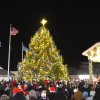For over four-thousand years, games involving hitting an object such as a stone, a small piece of carved wood or the skull or bone(s) of your enemies with a bent stick have been played by all races and nationalities. These games were highly competitive and usually goal-oriented, with the above mentioned stone, wood or skull being aimed at a tree, a wicket, a basket, a post … or whatever was handy at game time.
In early Iraq history, about three-thousand B.C., there is mention of a religious game called pukka-mikleu, played with a stick and ball. (Sidebar: next time you golf, call your favorite pro shop and ask for a pukka-mikleu tee time.)
The Egyptians, Indians (American and far-eastern), Chinese and Japanese people all historically have a variation of the game, but they all lacked one thing … a hole. Fast-forward to the 16th century and guess which nationality invented the hole in the ground to start the infancy of golf? If you are stumped for the answer, let me give you a few hints: think of a golf course without trees, but sheep on the fairway. Add in rough two feet tall and a calm wind, usually about 25 miles per hour, then mix in rain and more wind (and don’t forget 10 feet deep pot hole bunkers) Still not quite sure? Throw in a kilt, some fine whiskey and a bagpipe or two and by now you should have your answer. If you said the Scots or Scotland around 1556, you would be correct (If you take out the sheep, you still have the same look and feel of the 2019 British Open.) So now we jump ahead to 1774, when the Edinburgh Town Council decided to give a Silver Cup prize to the winner of their first annual golf tournament. Someone pointed out that to be an official tournament, “golf” should now have rules and basic standards. (Historians have pondered over the question: Why did it take almost two-hundred years for official rules to be implemented? Some believe that golf was only a game of recreation, not to be to stuffy with rules, while others think alcohol may have been involved. Or it could have been both.
A cry went up from the rich golfers (the ones who could afford clubs), “We don’t need no stinkin rules,” (similar to the bandits in the movie, Treasure of the Sierra Madre), but the town council prevailed and here is a synopsis of those first thirteen rules in 1774.
1. You must tee up your ball within a club length of the hole. (This is not a misprint; the green was also the tee box for the next hole.)
2. Your tee must be on the ground. (As opposed to what?)
3. You cannot change the ball you strike off the tee. (Even if you lose feathers or other stuffing during the hole play.)
4. You cannot remove bones, stones or broken clubs on the fairway to play your ball, but you can remove them within a club length of the hole, once on the green.
5. You may remove your ball from water or watery filth and tee it up behind the hazard. (This rule says you don’t take a penalty stroke, but give your opponent an extra stroke, if needed on the hole.)
6. If two balls touch on the green, remove the one closest to the green to putt the second ball.
7. After putting out, don’t mess with your opponent’s ball placement.
8. If you have a lost ball, play another from your last hitting spot and give your opponent an extra stroke on the hole, if needed.
9. After you putt out, don’t block the hole with your club, foot or any object.
10. If you ball hits a person, dog, sheep or horse, play it where it “lyes.”
11. If you strike at or hit the ball and your club breaks, it counts as a stroke.
12. The player farthest from the hole must play first. (Finally a rule that makes sense.)
I will give you this rule word for word and let you figure it out: 13. Neither trench, ditch nor dyke made for the preservation of the links, nor the scholar’s holes or the soldier’s lines shall be accounted as a hazard.”
19th Hole Invitation
Calling all Sussex County golfers. I am co-coordinator for the Seaford Swimming Association First Annual Golf Tournament on Oct. 26th (rain date Nov. 2) at my home course, Hooper’s Landing in Seaford, DE. This a capital improvement fundraiser, with a nonprofit tax ID number for those sponsors and golfers who wish to participate. Email me at: reb60315@yahoo.com for more info and a registration form.























































